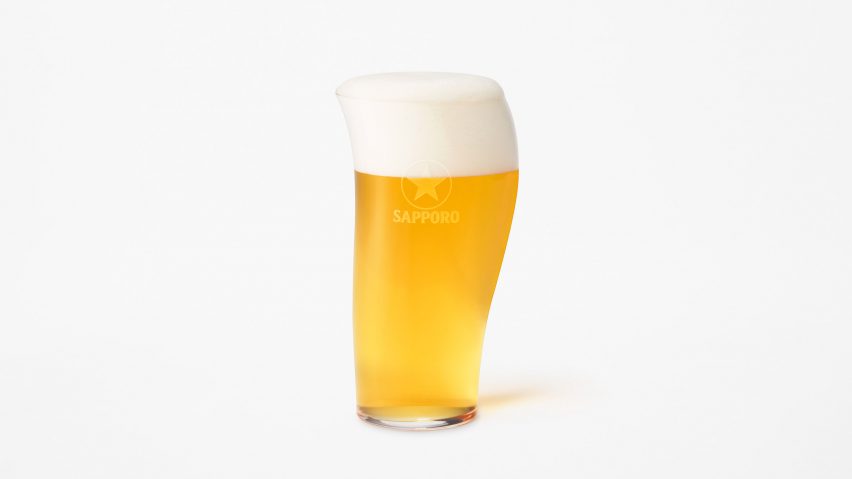
Nendo designs beer glass that provides "three different mouthfeels"
Design studio Nendo has created a glass for Japan's oldest beer brand Sapporo with a lopsided profile that affects how the beverage interacts with the palate of the drinker.
The glass has straight sides on the front and back while the left side curves inwards and the right side bulges outwards, creating an asymmetrical silhouette.
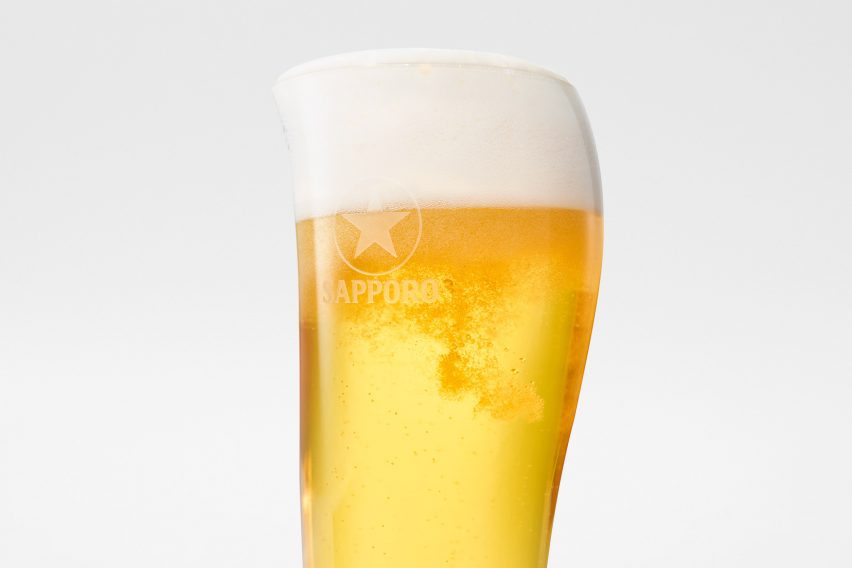
It was designed by Nendo as the "perfect" beer glass to enhance the taste of Sapporo's first bottled draft, launched in 1977 and affectionately known as Kuro Label after its black-coloured label.
"Kubo Label is well recognised for its multiple distinct flavour profiles, beginning with the 'first sip', the 'middle' and ending with the 'last sip', taking your palate through a journey of complex flavours and pleasures in one drink," Nendo explained.
"To maximise the richness and aroma of the beer, a glass with three different mouthfeels was designed."
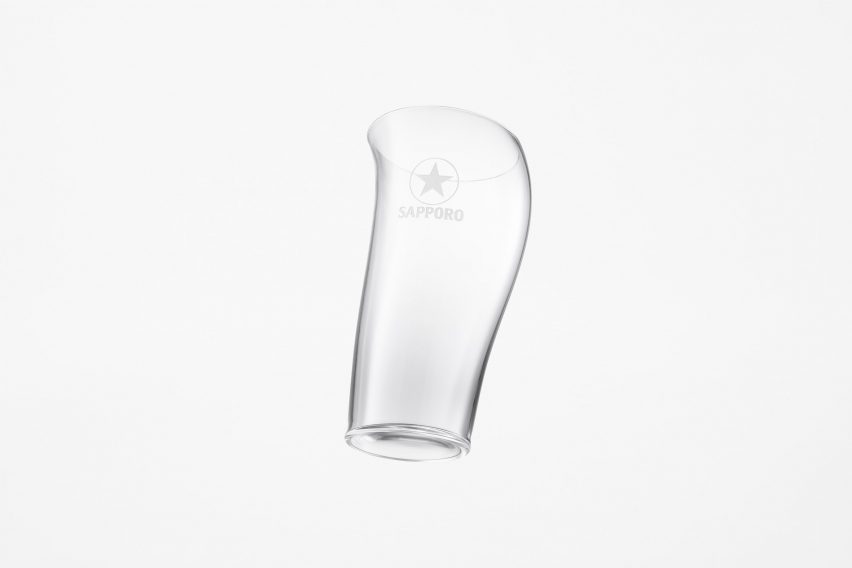
Mouthfeel is a relatively modern expression, most commonly used in relation to fine wines and spirits to describe the way they feel in the mouth, as distinct from their taste.
Nendo designed the straight side of the Sapporo glass to allow the beer to trickle along the centre of the user's tongue to the back of the mouth to deliver a crisp, refreshing taste.
Rotating the glass to drink from the concave side means the opposite bulbous side helps to capture and amplify the beer's aroma as the user takes a sip, the studio explained.
Finally, drinking from the convex edge causes the liquid to immediately hit the middle of the tongue, prompting the user to carefully control the amount consumed in a mouthful and ensure a full appreciation of the rich flavours.
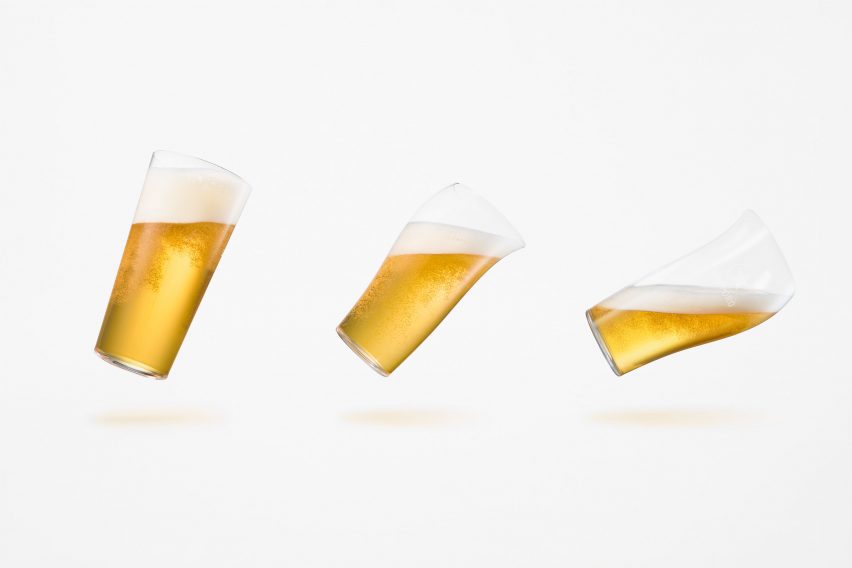
According to Nendo, the shape of the glass emphasises these different mouthfeels and flavours contained within the beer, "offering a way to savour multiple experiences within a single glass".
Nendo has previously worked on a project aimed at improving how beer pours from a can. Its proposal features two angled pull tabs that control the level of foam produced when opening the container.
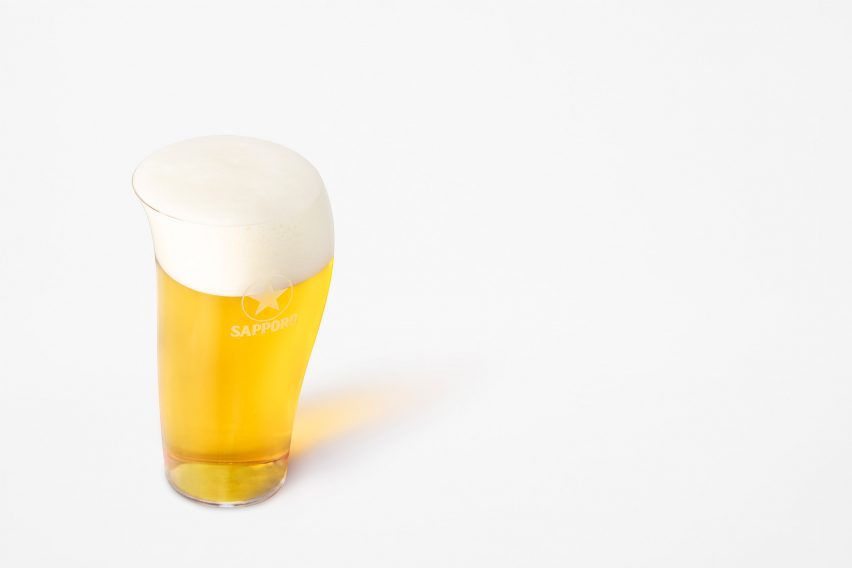
Oki Sato founded Nendo in 2002 after completing an architecture degree at Tokyo's Waseda University. The studio's work often brings a touch of humour or ingenuity to the things people interact with every day, whilst maintaining a minimalist Japanese sensibility.
Over the past two decades, Nendo has designed hundreds of products including the cauldron for the Tokyo 2020 Olympic Games and created a chair made from household plastic waste for furniture brand Fritz Hansen.